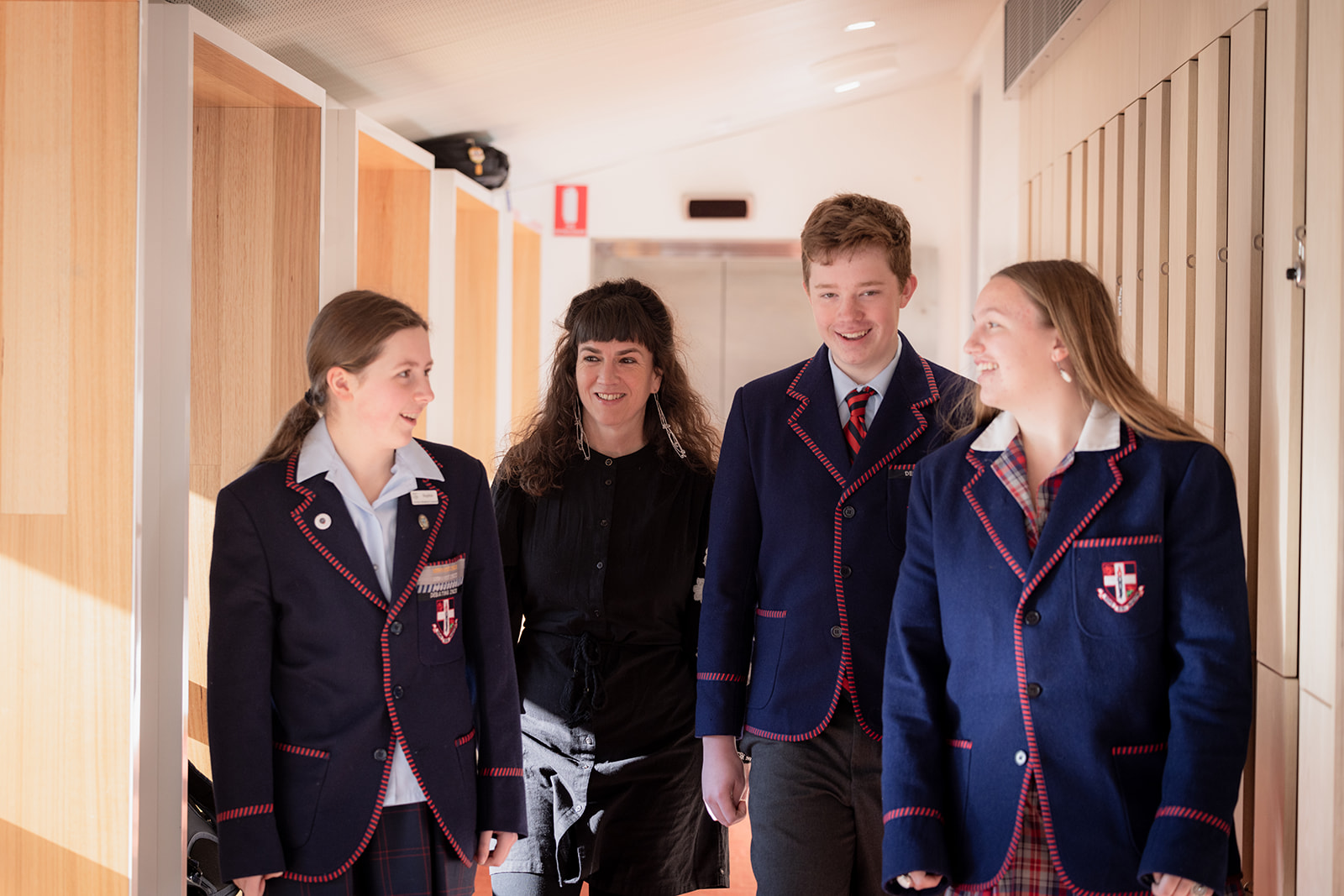Jean Yeates Writing Prize 2023
Posted on August 21, 2023
Jean Yeates, after whom this prize was named, was a former staff member at the School. She was born in 1916 and lived to be 80 years old.
There is a short passage about Jean from Kathy Rundle’s book People of the School, which cites Jean as having ‘a passion for the English Language, … devotion to education, … and the difference she made to many students’ lives over her 30 years of service at The Friends’ School’.
This year we were delighted to welcome Geordie Williamson as the judge of the Jean Yeates Writing Prize. Geordie is Macmillan Publisher-at-large and Chief Literacry Critic of The Australian. This year he awarded Michael Reid as the winner of the Prize and Grace Winspear as the Runner-Up. He shares his Prize Announcement speech below.

Jean Yeates, I understand, was a teacher legendary during her three decades at Friends’ for the strictness of her adherence to dress codes and decorum. And yet here we are, awarding the prize in her name that is given for creativity in its most unruly form – literature – made as it is from the anarchy of human imagination.
But I’m drawn to the idea that you could translate Jean Yeates sense of order and rigour into the wildness of the writing life. ‘Dress like a bourgeois, think like a demigod!’ wrote French novelist Gustave Flaubert – by which I take him to mean: true originality is not achieved through superficial means; it requires discipline. Gustave was not a man for a sleeve tatt or fashionable piercing. But his novels, especially the ground-breaking Madame Bovary, shook European society to its core. His brand of novelistic realism changed how we see the world.
Which brings me to the art of responding to writing prompts. Back in the last millennium when I was your age, my literary passions involved those authors who threw off all restrictions and ranged wherever they wished. Those known as the ‘Beat Poets’, for example: Jack Kerouac: high on Benzedrine and writing his masterpiece On The Road using a single 36 metre long spool of typewriter paper. Or William Burroughs, who experimented with cut-ups: scissoring written texts into pieces and re-arranging them to create weird prose experiments that seemed to tremble on the edge of meaning something, anything.
Later on, at university, I loved Walt Whitman with his free verse, singing the body electric as he put it, using a loping, looping open form that seemed to approximate the democratic experiment that was Nineteenth century America. And I revered Marianne Moore – a modernist poet and the daughter of a pastor who embodied Flaubert’s command to a T. Impeccably dressed, virginal and austere, her poetry nonetheless obeyed only the rules it set for itself.
Hers was writing obsessed by birds and animals and objects: a kind of bestiary of the imagination. The result was poems filled with literary allusion and fragments of quotation – whether from Japanese philosophers or old encyclopedia entries or magazine advertisements. She made poems like Bowerbirds build nests.
But what Marianne Moore taught me was that even the craziest human imagination requires a prompt. For her, it was art galleries, botanical gardens, library stacks, natural history museums, a walk in the park. An ornamental swan sculpture from the gardens of Versailles. The iridescence of the feathers on a dove’s neck. A steamroller doing roadwork.
Nothing was too mundane, nothing too random to be a subject for her poetry. But even her wildest fancies required some starting point – some thing for the poem to gel around. To give you sense, here is her poem ‘The Fish’, written while Moore was on holiday with her mother and brother in Coastal Maine during the summer of 1917:
The Fish
wade
through black jade.
Of the crow-blue mussel-shells, one keeps
adjusting the ash-heaps;
opening and shutting itself like
an
injured fan.
The barnacles which encrust the side
of the wave, cannot hide
there for the submerged shafts of the
sun,
split like spun
glass, move themselves with spotlight swiftness
into the crevices—
in and out, illuminating
the
turquoise sea
of bodies. The water drives a wedge
of iron through the iron edge
of the cliff; whereupon the stars,
pink
rice-grains, ink-
bespattered jelly fish, crabs like green
lilies, and submarine
toadstools, slide each on the other.
All
external
marks of abuse are present on this
defiant edifice—
all the physical features of
ac-
cident—lack
of cornice, dynamite grooves, burns, and
hatchet strokes, these things stand
out on it; the chasm-side is
dead.
Repeated
evidence has proved that it can live
on what can not revive
its youth. The sea grows old in it.
Now I have pondered for years what this poem is on about. And I’m still trying to puzzle it out. Even Moore’s cleverest critics have tended to throw up their hands and say something like, it’s just beautiful and mysterious and weird.
When we’re talking about the use of prompts, though, this poem seems to me an act of genius: a glimpse into an ocean pool on a walk on an island in the gulf of Maine. A jellyfish, some bivalves, darting fish. Then follows a poem that, like the best of our own national poet Les Murray, fruitfully inverts the nature of things.
‘The Fish’ describes a world at once from below water and above it. It moves from celestial metaphor to marine imagery in a blink. It swaps the hard geology of rock with soft aqueousness. It defeats our intelligence – as Ms Moore’s friend and fellow poet Wallace Stevens put it – ‘almost successfully’. It is a poem of Everything Everywhere All at Once.
Now, the prompt for this year’s prize was ‘the last wave’. A lovely, evocative image. For those of my generation and above, ‘the last wave’ might kindle memories of Peter Weir’s Australian film of the same name from 1977, giving the prompt an apocalyptic cast, since Weir’s film is about the endtimes.
For those who surf, the old pejorative term for the last wave in a set – the chick’s wave – might prompt reflections on gender dynamics and sexism. The wave may be seen as a human gesture, as a natural object moved by air currents, as a phenomenon that physicists describe.
And that ‘last’ attached – meaning ‘being, coming, or placed after all others’ – gives us the possibility of a finality that may be physical, temporal, ecological, eschatological, ontological, and so on. In other words, hold the prompt up to the light of your imagination and potential meanings will endlessly congregate.
Perhaps unsurprisingly in this harbour town, both the runner up and winner of this year’s prize followed Marianne Moore in deploying imagery relating to the sea and seashore in their entries.

